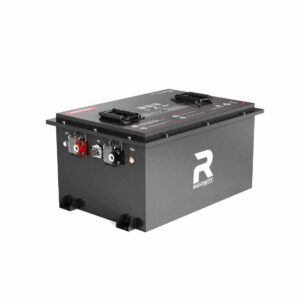What Are the Best RV Battery Types Driving Eco-Friendly Camping Trends
How Do Lithium-Ion Batteries Outperform Traditional RV Batteries?
Lithium-ion batteries dominate eco-friendly RV camping due to higher energy density, faster charging, and longer lifespan (3,000–5,000 cycles) compared to lead-acid batteries (300–500 cycles). They’re 50% lighter, require zero maintenance, and operate efficiently in extreme temperatures. Brands like Battle Born and Renogy offer solar-compatible models, reducing reliance on generators and fossil fuels.
Future of RV Battery Efficiency
Why Are AGM Batteries Still Popular for RV Camping?

AGM (Absorbent Glass Mat) batteries remain popular for budget-conscious campers. They’re spill-proof, vibration-resistant, and provide reliable power for moderate energy needs. While heavier and shorter-lived than lithium, AGMs cost 60% less upfront. Ideal for occasional campers or smaller RVs, they balance affordability with decent performance in off-grid scenarios.
| Feature | AGM Battery | Lithium Battery |
|---|---|---|
| Cost (100Ah) | $200-$300 | $800-$1,200 |
| Weight | 60-70 lbs | 25-30 lbs |
| Cycle Life | 500 cycles | 3,000+ cycles |
Many RV owners still prefer AGM batteries for seasonal use due to their lower upfront costs and compatibility with existing charging systems. These batteries perform well in RVs that aren’t frequently used for off-grid camping, as they can handle infrequent discharge cycles without significant degradation. Additionally, AGMs don’t require specialized charging equipment, making them a plug-and-play solution for upgrading older RV electrical systems. Their sealed design also eliminates the risk of acid leaks, which is particularly advantageous in mobile environments where vibration is constant.
What Makes Solar-Ready Batteries Essential for Sustainable Camping?
Solar-ready batteries like LiFePO4 (lithium iron phosphate) integrate seamlessly with solar panels, storing renewable energy efficiently. They feature built-in charge controllers and discharge protection, maximizing solar harvest. For example, Redway’s 12V 100Ah LiFePO4 battery supports 200W+ solar inputs, enabling campers to stay off-grid indefinitely while minimizing carbon footprints.
How Do Battery Management Systems (BMS) Enhance RV Safety?
Advanced BMS technology in lithium batteries prevents overcharging, overheating, and deep discharge. It balances cell voltages in real-time, extending battery life by 30%. For instance, Redway’s BMS includes Bluetooth monitoring, allowing users to track performance via smartphone—critical for preventing fires in confined RV spaces.
Which Emerging Battery Technologies Are Shaping Future RV Trends?
Solid-state and graphene batteries promise 2x energy density and 10-minute charging by 2030. Current prototypes from companies like QuantumScape could revolutionize RV camping by slashing battery weight while doubling range. Saltwater batteries (non-toxic, fully recyclable) also gain traction, aligning with zero-waste camping movements.
| Technology | Energy Density | Charging Speed | Eco-Friendliness |
|---|---|---|---|
| Solid-State | 500 Wh/kg | 10-15 mins | High |
| Graphene | 600 Wh/kg | 5-8 mins | Moderate |
| Saltwater | 150 Wh/kg | 2-4 hrs | Extreme |
The shift toward solid-state batteries addresses two critical RV needs: reducing weight for better fuel efficiency and increasing storage capacity for extended trips. These batteries use ceramic electrolytes instead of flammable liquids, dramatically improving safety in collision-prone vehicles. Meanwhile, saltwater batteries are gaining popularity among eco-conscious campers due to their non-toxic chemistry—they can literally be disposed of in seawater without environmental harm. As these technologies scale, RVers could see 1,000-mile ranges between charges while using batteries made entirely from abundant, sustainable materials.
“Lithium batteries aren’t just a product—they’re enabling a cultural shift toward sustainable adventuring,” says a Redway Power engineer. “Our clients report 70% reductions in generator use after switching to solar-LiFePO4 systems. The next leap? Integrating vehicle-to-load (V2L) tech so EVs can power RVs directly, creating closed-loop energy ecosystems.”
FAQ
- Can I mix lithium and lead-acid batteries in my RV?
- No—different voltage curves and charging requirements risk damaging both systems. Use one battery type exclusively.
- How long do lithium RV batteries last in cold weather?
- Premium LiFePO4 batteries operate at -4°F to 140°F but charge 20% slower below 32°F. Use insulation blankets in freezing climates.
- Are recycled RV batteries truly eco-friendly?
- Yes—98% of lithium battery materials are recyclable. Programs like Redway’s take-back initiative ensure responsible disposal.
